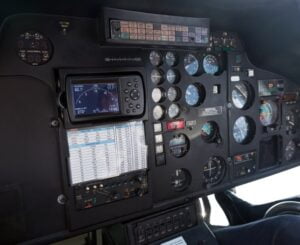In the realm of aviation communication, ARINC 600 connectors reign supreme. Developed by ARINC, these connectors are the linchpin of modern aircraft electronics racks and sub-rack systems. Their reliability, versatility, and compatibility make them indispensable in ensuring seamless data exchange within aircraft systems.
In this concise exploration, we delve into the world of ARINC 600 connectors, uncovering their design, features, and pivotal role in aviation technology. Join us as we unravel the essence of these connectors and understand why they are the backbone of aviation communication.
What is ARINC 600
The aircraft industry is frequently brought up in conversations involving the term ARINC 600. For nearly three decades, the ARINC 600 has been an essential component in the design and production of avionic equipment, even though it is just one ARINC standard among several. Aeronautical Radio, Incorporated, or ARINC, was a business that originally offered systems engineering and transportation communications solutions to a variety of industries. Eventually, Collins Aerospace acquired ARINC.
But aside from their business endeavors, ARINC also created a number of standards for hardware used in communications and systems engineering, with a strong focus on avionics. Let’s talk about the ARINC 600 standard, which is now the most widely used avionics packaging standard. It works in tandem with the ARINC 700 standard, which specifies the shape, fit, and function of avionic equipment

Why is ARINC 600 so widely used?
The Modular Concept Unit (MCU) was first used in avionics with the ARINC 600, which makes it noteworthy. What distinguishes ARINC 600 from other avionic standards is that it standardizes mounting dimensions, connector insert arrangement, and connector shell specification.
Modular equipment can be put into a rack tray that complies with the ARINC 600 standard. It is not necessary to disassemble the entire apparatus in order to insert, remove, and replace this equipment into a rack. Depending on the equipment’s intended use, designers can choose from a range of signal, power, and optical contacts to suit their demands.
This is particularly helpful in airplanes with large and sophisticated equipment configurations since it saves time and money when it comes to installation and repairs because individual equipment pieces do not need to be removed and replaced.
What are ARINC 600 Connectors?
A standard rack and panel connector, ARINC 600 connectors are mostly utilized in avionics applications. Line-replaceable units (LRUs) and racks or cabinets can link mechanically, electrically, and environmentally thanks to this modular packaging standard.
The ARINC 600 connector is a rectangular molded insulator housed in a metal or composite shell. Its numerous forms handle high-speed data, power, signal, and fiber optics (with adaptors) and are equipped with application-specific combinations of contacts. Shells are usually mounted with solder or screws. There are three configurations of ARINC 600 connectors: twinax, coax, and quadrax.
ARINC 600 connections have traveled the globe for almost 40 years. This essential part of contemporary avionics enabled comfort, safety, navigation, communication, and networking features in both commercial and military aircraft, contributing to the dawn of modern air travel and transportation. Certain military ground vehicles are also equipped with ARINC 600 connectors.
Configuration Advantages
Applications-specific insert configurations of power, coax, and fiber connections, such as Ethernet, Firewire, 100 Base-T, Twinax and Quadrax formats, and Fibre Channel, can be configured for ARINC 600 connectors. Most inserts can be changed in the field, and many varieties allow for blind mating.
Design Notes
- Standards – The ARINC 404 (MIL-C-81659) was replaced by the ARINC 600. The ARINC 400 series is related to databases, data buses, and wiring. An older range used in analog aviation navigation systems was the ARINC 500 series. Twenty-one application-specific subtypes of the 600 series support various systems, software features, test equipment, and communications protocols.
- Mating Cycles – Depending on the manufacturer, ARINC 600 connections are normally made to survive 500–800 low insertion force mating cycles.
- Spacing – Low-profile modular ARINC 600 connectors are made to be installed closely together in packed panels and spaces that are limited in size.
- Materials – ARINC 600 receptacles are made of alloys, stainless steel, and aluminum. Plastic inserts are possible. Materials have to adhere to RoHS regulations, flammability, optical smoke density, and outgassing specifications.
- Ruggedization – AThe robust performance of RINC 600 connectors is intended for high-reliability and harsh environment aviation applications. Vibration, shock, high or low temperatures, radiation, rough handling, chemicals, and other external elements are examples of operating conditions. Numerous vendors provide both non-environmental and environmental options. A sealing sleeve to enclose mated connections or silicone or rubber O-ring gaskets between the shell and inserts may be found on a sealed version of this connector.
- Sealing – A sealed variant of this connector could have a sealing sleeve around the mated connectors or silicone or rubber O-ring gaskets between the shell and inserts.
- Interference – Radio-frequency interference (RFI) and electromagnetic interference (EMI) are major issues in aviation environments where a lot of electronic equipment is present. This worry is lessened by the metal used in the shell and ground terminal, and many manufacturers provide improved shielding.
- Filters – Filtered versions are available from some manufacturers. Planar filter arrays and TVS diodes may be integrated into some configurations.
Conclusion:
In conclusion up, ARINC 600 is the gold standard for aviation communication, and its extensive use emphasizes how important it is. Fundamental to it are ARINC 600 connectors, which are carefully engineered to guarantee dependability, adaptability, and interoperability amongst different aircraft systems. ARINC 600 connectors are an essential part of modern aircraft because of their inherent configuration advantages and design concerns. ARINC 600 is still essential today since it forms the foundation for effective and seamless communication between aircraft systems.






